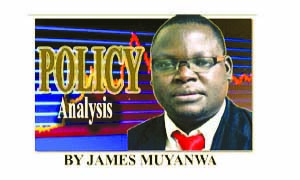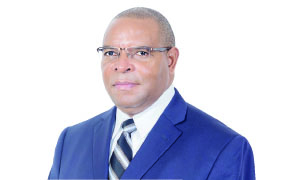THE Bank of Zambia (BoZ) a fortnight ago announced a 2.5-percentage point increase in the minimum statutory ratio on both local and foreign currency deposits for banks to 11.5 per cent.
The measures which took effect on Monday this week, affect government deposits and those in vostro accounts which are accounts correspondent banks hold on behalf of others.
This is according to the circular dated February 1, 2023 released by Deputy BoZ governor Francis Chipimo and addressed to all heads of commercial banks.
Dr Chipimo says the measure is aimed at addressing the increased volatility in the exchange rate which intensified in December 2022 and has persisted well into 2023.
The measure is to safeguard stability of the foreign exchange market, particularly the value of Kwacha against the major convertible currencies like the United States (US) dollar.
External and internal pressure on the Kwacha has seen the value of the local currency breach the psychological mark of K19-per-dollar recently.
Following the move by Central Bank, there have been mixed reactions from the stakeholders in both the economic and political circles, with one group highlighting the perceived negative consequences while another underscoring the positive aspects.
Last week, this column looked at the measures and some of the possible consequences – both positive and negative.
I noted that the BoZ had weighed the consequences of letting the Kwacha continue falling on one hand and the risks associated with its intervention on the other and found that the economic benefits of intervention outweighed those for letting the Kwacha continue falling unabated.
To advance the debate, I promised to look at the reserve ratios for some of the countries in the region and beyond to compare with Zambia’s figure.
A basic research shows that worldwide, Venezuela has the highest reserve ratio of the 73 per cent while in Africa Nigeria seems to claim the top position at 32.5 per cent.
Further, out of the countries surveyed by the CEIC Data, which provides expansive and accurate data insights into both developed and developing markets, the reserve ratio for Argentina is at 41 per cent while that of Moldova is 37 per cent with Brazil at 21 per cent.
Sudan and Egypt, two other African countries have 18 per cent reserve ratio each while that of Zambia’s neighbour, Mozambique, is 10.5 per cent and that of one of Africa’s fastest growing economies, Mauritius, is nine per cent.
Mentioning of Zambia’s neighbouring states, Botswana has pegged its reserve ratio at 2.4 per cent, Kenya at 4.3 per cent, Malawi at 3.8 and South Africa at 2.5 per cent.
Globally, the lowest seem to be the United States and Morocco at zero per cent followed by countries like United Arab Emirates, Austria, Finland, France, Germany, Greece, Iceland and Tunisia at one per cent each, followed by others like Czech Republic and Ecuador at two per cent.
India’s reserve ratio is 4.5 per cent while Israel’s is at six per cent, Indonesia has pegged it at nine per cent while Iran’s is at 10 per cent.
Still on the issue of monetary intervention measures, the BoZ will have its Monetary Committee Meeting announcement and Press briefing today for the first quarter of this year.
The Press Briefing will be held at 11:00 hours in the BoZ auditorium.
During the Press briefing BoZ governor Denny Kalyalya is expected to announce the Monetary Policy rate for the next quarter and tackle other important economic issues.
At its November 21-22, 2022 meeting the Monetary Policy Committee decided to maintain the Monetary Policy Rate (MPR) at nine per cent but this time around it may be forced to increase it to cement measures aimed at curbing the falling value of the Kwacha.
The scenario for this forum is that the MPR will be increased by 0.5 percentage points to 9.5 per cent for the next quarter to help curb inflationary pressure and augment efforts to curb the Kwacha from falling further.
Dr Kalyalya is also expected to look at the interest rate movement as well as the credit and money supply situation in the country.
He may announce further interventional measures to help improve the current economic situation while also cautiously keeping the Central Bank’s eyes on the investment sector to retain the investors’ appetite to invest in Zambia.
For comments call: 0955 431442, 0977 246099, 0964 742506 or e-mail:
jmuyanwa@gmail.com.








